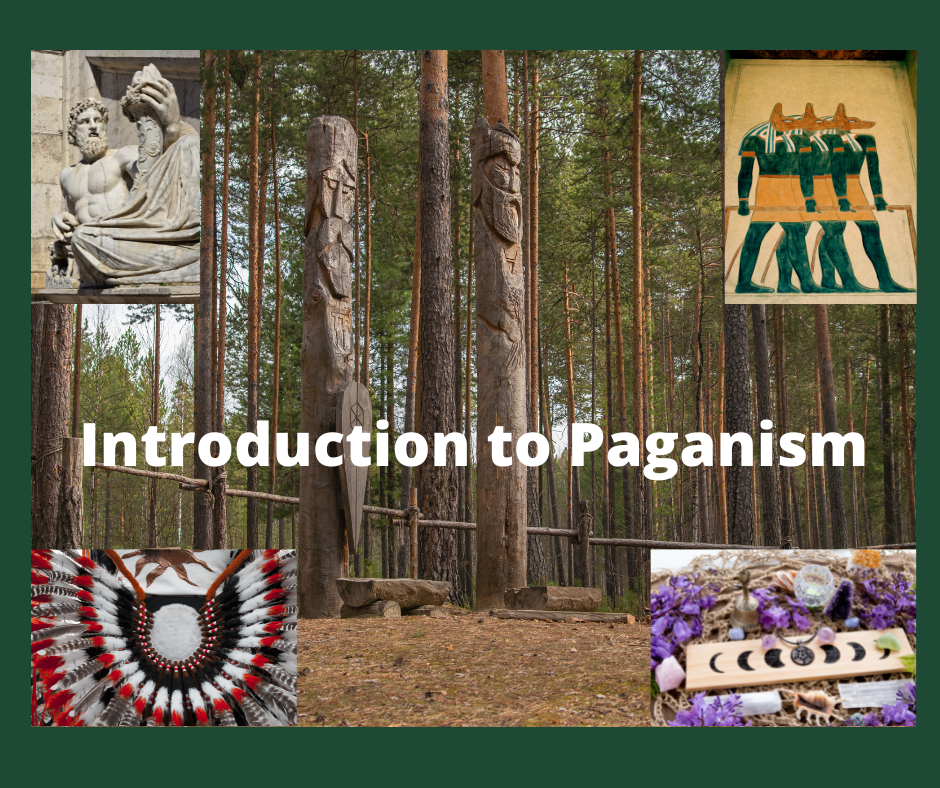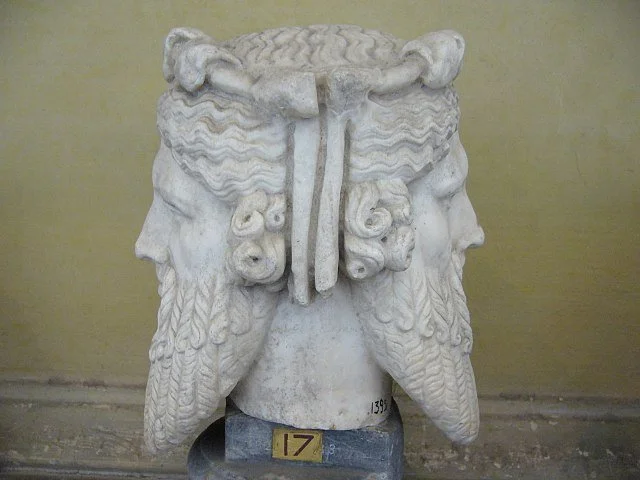Introduction To Paganism
What is Paganism?
Paganism is a religion that is not part of the “major” world religions, namely Christianity, Islam, and Judaism (Abrahamic Religions). Historically, it is a religion that was practiced during the pre-Christian era by indigenous people. Often these cultures recognized many gods (polytheism) but some were more monotheistic (one god).
Hinduism is interesting as it is the world’s third-largest religion albeit very different from the Abrahamic religions which share a common beginning. Hindus worship many gods but view them all as various forms of the one and same God. So we don’t consider it “pagan” for our purposes.
Today Paganism has become a modern religion that emphasizes and incorporates beliefs such as nature worship and believes that animals, plants, and matter such as rocks have a spiritual essence. Pagans have a broad range of doctrines (pantheistic)
This article will introduce you to a number of pagan groups as well as point you to some articles to help you learn more.
Who Are Pagans?
You may hear the terms contemporary or neo-paganism to describe today’s modern paganism. Because there is no “dogma” in paganism we are a delightfully diverse group. We come together with a shared passion to explore our spirituality.
Pagans draw from several different traditional religions and cultures which may include: Celtic, Druid, Egyptian, Greek and Roman, Rodnovery, Mayan, Native American, Norse, and Wiccan.
Each one of these has several subsets! So our goal is to be kind, to coexist, and accepting of our fellow pagans.
Keep reading!
Three General Characteristics of Pagans:
1) Their religious and spiritual practices revolve around the earth, the natural world, and/or the manifest physical universe
2) They believe in spiritual beings: goddesses, gods, and ancestral spirits as well as natural spirits such as animals, fairies, and elves.
3) Pagans follow an agricultural or lunar calendar that follows natural earth cycles. In addition, they follow the life cycle of birth, growth, death.
Why Be A Pagan?
You were raised a pagan
No dogma or authority figure
Connect with nature and the environment
Individual responsibility vs, sin and shame
God AND Goddess - the female deity
Explanations of super-natural experiences
Power of magic
Religious choice - Eclectic practices welcomed
Inclusive - paganism is open to all races, genders, and sexual orientations
Types of Pagans
Celtic/Druidry
We do “lump” these two together although there are several subtle differences that practitioners make.
Druidry is a revival and reconstruction of the ancient Celtic religion, and its practitioners are called Druids. Originally, Druids were the priest class of Celtic society, but now the term often refers to any Celtic neopagan.
Ancient Celts lived in Western Europe from 500 BCE and 500 CE and their traditions were kept alive particularly in Ireland and Great Britain.
The revival movement has its roots in the 1600s, although Druidry as we know it only picked up a large following in the 1960s.
Most modern Druids affirm reincarnation and believe that soul goes through a continual cycle of births, lives, and deaths. They believe in a spirit world as well, and that it can cross over with our own world.
Not only that, but Druidry is also very open to other Indo-European faiths and welcomes their believers to practice as Druids too. Druid societies are committing to researching and reconstructing these religions and sustaining them as well.
Druids commonly practice rituals and prefer to celebrate them in the natural world, often in the ruins of Celtic history. They typically involve sharing a sacred meal and meditations.
Keep in mind, however, that Druidry and Wicca are not the same. While there is some overlap and some pagans identify as both, they're overall two separate traditions.
That said you can of course combine aspects of each one into your own faith.
One of the aspects of the Celtic faith that we love to follow is the Celtic Tree Months.
Hellenism
Greek and Roman
Although the Greeks and Romans had different Gods and Goddesses they often corresponded with each other and had similar traits and stories.
These traditions are rich in history and both reflect the powerful empires associated with Ancient Rome (Italy) and Athens (Greece).
Hellenics are pagans who practice reconstructions of ancient Greco-Roman spirituality, specifically devoting themselves to the Greek Pantheon and applying the wisdom of Greek philosophy to their lives.
Because it’s so diverse, Hellenism lacks a central tradition of worship. However, you can expect most Hellenic ceremonies to include purification rituals, prayers, hymns, and feasting.
Hellenism is one of the older forms of neopaganism. Its roots date back to the Roman Empire when Julian attempted to revive his ancestral faith in the face of Christianity's increasing influence.
Since then, Hellenism has repeatedly been revived and practiced.
As pagans, we can be thankful that much of ancient Greece and Rome is so well preserved, especially its philosophy.
Kemetism
Ancient Egypt
Certain pagan groups reconstruct the ancient Egyptian religious traditions, which is called Kemetism or Kemeticism.
Kemetism follows the Ancient Egyptian culture which has fascinated humans for thousands of years with its magnificent architecture.
Kemetics follow principles derived from ancient Egyptian spirituality and philosophy, often derived from historical writings and archeology. An example of this would be Ma'at, the principle of balance and justice.
Additionally, Kemetics worship the Egyptian pantheon, the Neteru, and derive inspiration for their reconstruction from their interactions with the divine. Isis, Osiris, and Ra are all popular patron deities. Read our article on Sekhmet: Egyptian Goddess of War and Healing.
Like all other reconstructionists, Kemetics understand that they aren't members of these ancient cultures, although they might be their descendants.
Kemetism doesn't always strive to be perfectly accurate to ancient Egypt, which itself was a living culture that lasted and adapted for centuries. Rather, Kemetics strive to revive a religion that works for them. It might work for you too.
Native American
Of course, nobody can summarize all of Native American spirituality in a single article. It’s just as diverse as any other form of paganism, if not more so. Native American paganism is still very much a living religion.
You can still find some people today practicing their ancestral Native American religions, with few breaks in that tradition.
Native American paganism is the spirituality of the people indigenous to the American Continents and those who saw wisdom and beauty in these traditions and have adopted them as well.
Despite its general diversity, Native American paganism generally includes the belief in creation myths, the adherence to many spirits and deities, ancestor worship, incorporation of natural elements, and an understanding of the importance of a vision quest.
Many people of Native American descent combine elements of their ancestral religion(s) in their practice.
Norse
AsatrU, Germanic Neopaganism, Heathen, Vanatru
The Norse religion was historically based in Northern Europe in Scandinavia, Germany, and the Netherlands. We often refer to it as the Viking era however it is much deeper than that.
Contemporary Norse paganism grew in the 1970s, as part of a greater reconstruction movement to revive Germanic paganism. It's the closest religion to that practiced in the ancient Norse cultures.
Germanic pagans worship Odin, Tyr, Thor, Freya, and Njord among others. A major Norse festival is Yule, from which many modern Christmas practices are derived.
Originally, Yule was a midwinter festival during the twelve days of the winter solstice. Asatruar today practice it as such, reviving and purifying its ancient traditions.
Yule is a joyous occasion full of feasting, dancing, and celebrating with family. A highlight is when an evergreen tree is cut down, set up, and decorated to represent Yggdrasil, the World Tree.
Check out my video on Pagan Paths
Rodnovery
Also known as the Slavic Native Faith or Slavic Neo-paganism. This faith originates in Central and Eastern European countries and their descendants.
Like most pagan faiths Rodnovery practitioners worship many gods and are nature-oriented.
Wicca
Wicca is a modern religion and does not have origins in a particular country. It was formally established in 1954 by British Teacher, Gerald Gardener.
Arguably the most famous form of paganism today, Wicca began as a combination of folk and ceremonial magic with various pagan deities and practices. Since then, it has proved incredibly popular, and it is one of the fastest-growing religions in the United States.
Wiccans follow a God or Goddess, sometimes in pairs as well. Typically, they worship a pagan deity who most closely resonates with their personality and experiences.
However, Wiccans also see the energy of God in all things, especially nature. This is the case because they believe that all creation is manifested from four elements, namely water, earth, wind, and fire.
Wicca is also notable for the Sabbat and the Rede. The Sabbat, or Wheel of the Year, is the Wiccan calendar while the Rede is the core tenant of their morality: Do as ye will, so long as it harm none.
It's good to remember that while magic is a major part of Wicca, not all Wiccans are witches or otherwise practice it.
Eclectic Pagans
However, if none of these pagan traditions seem a perfect fit for you, you aren't alone. That's where Eclectic Paganism comes in.
Eclectic Paganism draws from various traditions, practices, and identities to create a system of worship that works for you, the individual.
Eclectic Paganism is a personal religion, and so no two Eclectic Pagans are the same. And that's the point. You combine aspects of many pagan religions to meet your desired spiritual goals.
For instance, I often have various deities or symbols on my altar. There are times I want to seek strength from powerful (read kickass) female deities. So my altar may have Sekhmet, Morrigan, and Spider-Woman at the same time to honor and pray to.
As such, this is a unique path. However, it’s no less viable than any more cohesive tradition and you're not "less" of a pagan for following it. Nobody is.
Eclectic Paganism has helped thousands connect spiritually and lead fulfilling creative lives. You're exposed to various beliefs and opportunities, which often make up for the experiences you might have in a concrete path or in a specific coven. (Although many covens encourage electicness).
Respectfulness
As with everything in paganism, be respectful. Approach paganism with sensitivity and humility. It's a beautiful form of religion but remains open to different cultures however, make sure you don’t practice cultural appropriation.
Cultural appropriation occurs when you stereotype a culture or seek monetary gain from that culture. One popular example is sports teams named “Indians” or “Vikings” or witch costumes that are green-faced and warty.
Many wonderful things happen when we blend cultures and grow spiritually. Our goal is cultural appreciation and this has a powerful energy.
As pagans, we want to try new foods at feasts, learn new dances and music, and perform rituals from different types of pagans. This helps us to grow spiritually as well as relate to persons throughout the world.
The key is acknowledging and being thankful to whom those traditions come from.
Take Away
Regardless of our differences, paganism is and will always be - a family.
Check out our pagan 2022 calendar with links to holidays you can celebrate.

















The birch tree symbolizes starting over, fertility, rebirth, and regeneration. In fact, birches are one of the first trees to grow back after a forest fire.
Birch or Beithe, is the first tree of the Ogham, the Celtic tree alphabet. Beithe (pronounced ‘bey’) is the Gaelic word for birch and means inception or existence.